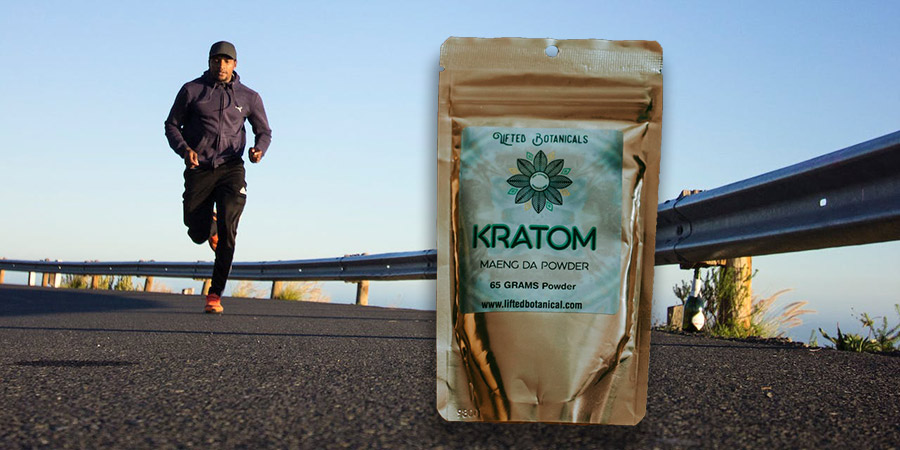Kratom has long been used for its medicinal properties in certain parts of Southeast Asia. The leaves of the Kratom tree contain compounds that can have varying effects on the body, depending on the dosage.
Happy Go Leafy enthusiasts often appreciate the natural, botanical qualities of Kratom, finding solace in the delicate balance it brings to their well-being.
Here are five known benefits of Kratom, which have contributed to its growing popularity.
Pain Relief
Kratom’s ability to provide pain relief is one of the primary reasons for its use.
Pain can be categorized into two types: nociceptive and neuropathic. Nociceptive pain is caused by physical injury to body tissues, while neuropathic pain is due to chronic nerve damage. Kratom leaves have a high concentration of alkaloids like mitragynine, which binds to opioid receptors in the brain, responsible for pain perception.
Unlike traditional opioids, which have a high risk of addiction and a host of side effects, Kratom offers a gentler alternative. The alkaloids in Kratom dampen the pain signals which offers relief to users suffering from conditions like migraines, back pain, osteoarthritis, osteoporosis, and rheumatoid arthritis.
It’s essential to understand that Kratom’s pain-relieving properties vary with strain and dosage. For instance, red-veined Kratom strains are often recommended for their analgesic properties and are favored by those suffering from chronic pain. These strains are known to contain a higher concentration of 7-hydroxymitragynine, an alkaloid with potent pain-relieving effects.
Moreover, the method of ingestion also plays a role in the effectiveness of pain relief. While powdered Kratom and capsules are common, some users prefer making tea from the leaves for quicker absorption and faster onset of relief.
Mood Enhancement
The mood enhancement qualities of Kratom are significant for individuals battling depression or day-to-day stress.
By influencing the levels of serotonin and dopamine in the brain, Kratom can create a sense of euphoria and heightened well-being. These neurotransmitters are essential for regulating mood, sleep, and appetite.
When Kratom is consumed, users often report a notable improvement in their overall mood and a decrease in anxiety levels, contributing to a more positive outlook on life.
The dosage plays a critical role in the type of mood enhancement experienced. Small doses of certain strains like Maeng Da or Green Malay can lead to increased sociability, decreased anxiety, and an overall more optimistic mood without the overstimulation that might come from substances like caffeine.
In contrast, higher doses provide a sedative effect that can help with relaxation and alleviate the symptoms of anxiety or depression. This sedation is not to be confused with a decrease in cognitive ability, but rather a soothing of the overactive mind, which may help users achieve better mental clarity.

Energy Boost and Improved Focus
Kratom’s stimulant effects are attributed to its action on the adrenergic system and increased release of noradrenaline and adrenaline. These effects lead to an increase in energy levels, often described by users as natural and manageable, unlike the sometimes erratic energy spikes caused by caffeine.
Moreover, Kratom can improve focus and concentration by increasing the release of acetylcholine, a neurotransmitter linked to the regulation of arousal, attention, memory, and motivation.
Certain strains of Kratom, such as White Borneo or White Thai, are known to be particularly effective for their stimulating properties. They can combat fatigue and increase alertness, clarity, and efficiency in completing tasks that require mental stamina.
Freelancers, students, and professionals often use these strains during long work sessions when sustained concentration is required.
As for dosage, a moderate amount can enhance cognitive function, but it’s important to note that high doses might lead to counterproductive sedative effects.
Management of Opiate Withdrawal
Kratom’s role in managing opiate withdrawal is a complex and significant one. Its alkaloids act on the same brain receptors as opioids, offering similar pain relief and mood-enhancing effects but with a lower risk of long-term dependency. This action can make the withdrawal process from opioids less severe.
During withdrawal, individuals can experience symptoms such as nausea, muscle cramps, agitation, and insomnia.
Kratom can mitigate these symptoms by providing a milder, more manageable opioid-like effect that can ease the transition period.
Users transitioning from opioids may find that Kratom helps to curb withdrawal symptoms while re-establishing normal body functions.
For instance, Red Bali and Red Maeng Da strains are often recommended for their calming properties, which can soothe withdrawal symptoms like anxiety and sleep disturbances. The careful management of dosage is crucial, as a gradual reduction in Kratom use is typically advised to prevent dependence on Kratom itself.
Support for Immune System
While less widely recognized than the other benefits, Kratom’s potential impact on the immune system is gaining attention. The alkaloids in Kratom, such as isopteropodine, isorhynchophylline, isomitraphylline, and mitraphylline, are thought to have immunostimulant properties. These alkaloids may help bolster the immune system, making the body more capable of fending off pathogens and diseases.
Additionally, Kratom’s antioxidant properties combat oxidative stress, which is linked to aging and numerous diseases.
The potential antimicrobial activity of Kratom could also make it a valuable natural supplement for enhancing the body’s resistance to infections. While this area of benefit requires more scientific exploration, the anecdotal evidence suggests that regular Kratom users may experience fewer colds and other common illnesses, perhaps due to these purported immune-boosting effects.
The Bottom Line
While further research is necessary to fully understand and corroborate these benefits, anecdotal and preliminary scientific evidence suggests that Kratom can offer significant pain relief, mood enhancement, increased energy and focus, assistance in managing opiate withdrawal, and potential immune system support.
Users should approach Kratom use responsibly, considering the strain, dosage, and frequency to maximize these benefits while minimizing potential risks.

